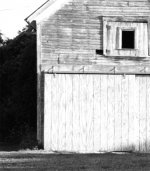Benjamin Marks
Veteran
Just a quick sanity check. I just developed my first test rolls of Freestyle LegacyPro 100 (consensus candidate: Fuji Acros). My Jobo is on the fritz, so I developed by hand.
One roll: M6, 35 Summicron/75 Summicron.
One roll: R5 90 Summicron/50 Summicron.
Exposure was set at ISO 100, half metered with a Sekonic hand meter and half with internal camera meter. XTol 1:1 68 degrees 9.5 minutes. 10 inversions every 30 seconds. XTol solution made distilled/dehumidifier water.
Midtones look good, shadows look OK, but I had trouble holding on to the highlights. Sounds like the nominal speed of the film is 80-100, but I need to pull back between 10-20% on development, or agitate less.
Any other Acros users users out there with their own tests?
Ben Marks
One roll: M6, 35 Summicron/75 Summicron.
One roll: R5 90 Summicron/50 Summicron.
Exposure was set at ISO 100, half metered with a Sekonic hand meter and half with internal camera meter. XTol 1:1 68 degrees 9.5 minutes. 10 inversions every 30 seconds. XTol solution made distilled/dehumidifier water.
Midtones look good, shadows look OK, but I had trouble holding on to the highlights. Sounds like the nominal speed of the film is 80-100, but I need to pull back between 10-20% on development, or agitate less.
Any other Acros users users out there with their own tests?
Ben Marks


